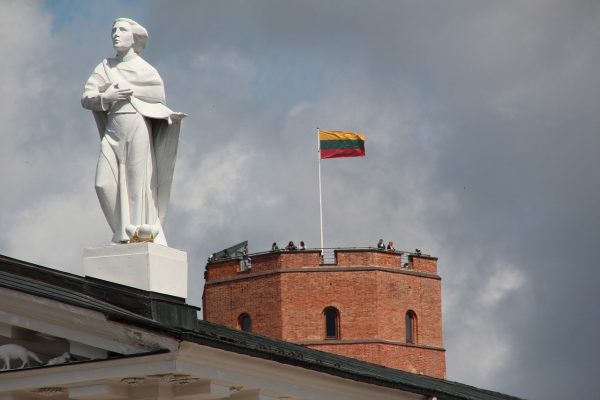These data should be interpreted with care. The wording of the questions is not neutral: China is referred to as “the Chinese government” or “the Chinese regime.” The interviews were conducted after the Russian invasion of Ukraine, so Lithuanians may project their negative attitudes toward Russia onto China, which has provided diplomatic support to Moscow. However, if the results hold up, we are witnessing not only growing fear of China’s power and skepticism about the Chinese political model, but also a cultural conflict between China and Lithuania. In a short time, China has become Lithuania’s “other.”
Officials at the Chinese foreign ministry profess to be baffled by this. In the joint communique establishing diplomatic relations between China and Lithuania, China “supports the legal government of Lithuania in its efforts to safeguard state independence … and [its] application … for a full membership at the United Nations.” In exchange, Lithuania “recognizes the government of the People’s Republic of China as the sole legal government of China” and “undertakes not to establish official relations with or engage in official contacts with Taiwan.” China has kept its promise, while Lithuania – Chinese officials argue – has not.
Likewise, China respects Lithuania’s post-World War II borders, including the return of its capital, Vilnius, which was part of Poland, and the city of Klaipėda, which belonged to Germany. Why, they complain, does Lithuania support separatism in Hong Kong, which China leased to Britain at gunpoint in the 19th century and reclaimed in accordance with international law in the 1990s?
Chinese officials also point out that at the United Nations, China has abstained on Russian proposals to censure Lithuania for its alleged discrimination against the Russians and the Poles. They say Lithuania could show similar consideration for China’s difficulties in integrating its ethnic minorities, including the Uyghurs. Instead of picking fights with China on domestic political issues, they argue, Lithuania should pursue opportunities for mutually beneficial economic cooperation.
This may be true. However, national identity – complex, contradictory, and manipulated by the elites, but nonetheless real – sets the context in which foreign policy is made. Since China is seen as a threat to Lithuanian identity, and vice versa, restoring good relations will not be easy.
Conclusion: A Long Battle
Lithuania’s policy toward China reflects its contradictory national identity: It is a small state proud of its independence and a post-imperial nation eager to assume leadership. More actively than Estonia and Latvia, Lithuania participated in the EU’s Eastern Partnership, which tried to reduce Russian influence in the former Soviet republics. When this initiative failed, the conservative-liberal government elected in 2020 decided to position Lithuania as a critic of China and an advocate for Taiwan. This would give Lithuania an issue on which it could claim moral authority in the EU and gain recognition from the United States.
To persuade the Lithuanian public, however, the government argued that Taiwan was to China what Lithuania had once been to the Soviet Union: a small country that wants to determine its fate in the face of outside coercion. Remarkably, it has succeeded. Unlike Estonians and Latvians, Lithuanians now consider China a danger to their country and a threat to their identity.
Of course, China sees things differently. It wants to complete its national reunification that began in 1949 after a “century of humiliation,” when foreign powers divided the country into spheres of influence and seized some territories, such as Taiwan, outright. As a result, the battle between Lithuania and China – the “center of gravity” and the Middle Kingdom, the “brave country” and the country that “dares to think and act”– is not likely to end soon.
This article is adapted from Aleksander Lust’s journal article “In Dire Straits: The Baltic States between Mainland China and Taiwan,” published in Asian Perspective, Vol. 48, No. 2 (Spring 2024), 351-378.
Source link : https://thediplomat.com/2024/08/whats-driving-lithuanias-challenge-to-china/
Author :
Publish date : 2024-08-17 07:00:00
Copyright for syndicated content belongs to the linked Source.
